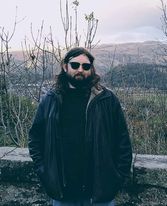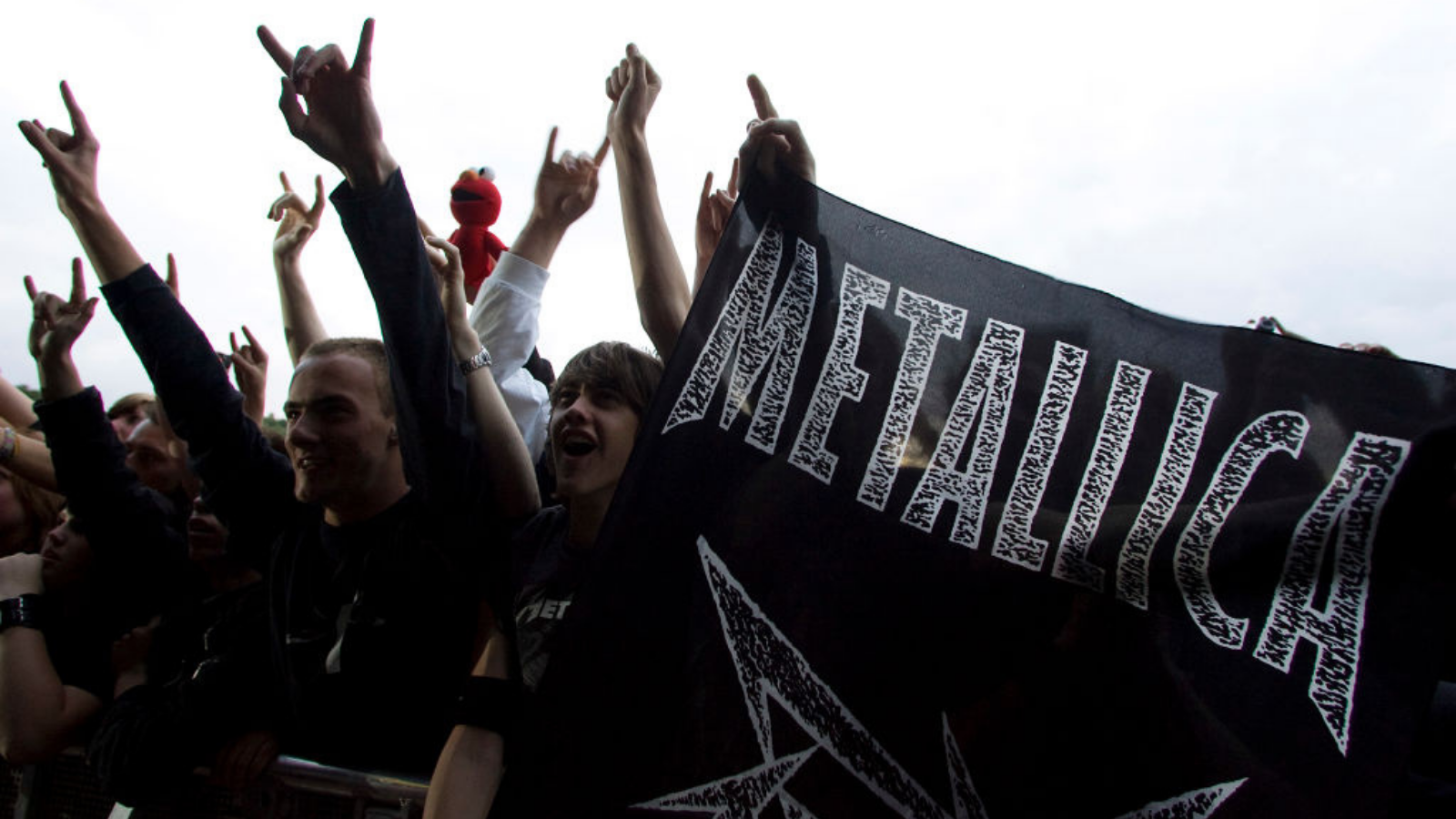From drugs, despondency and dead bats to celebrity status and heavy metal godfather, the rollercoaster story of Ozzy Osbourne's solo career
After his turbulent exit from Black Sabbath, it turned out Ozzy's wild story was only just beginning
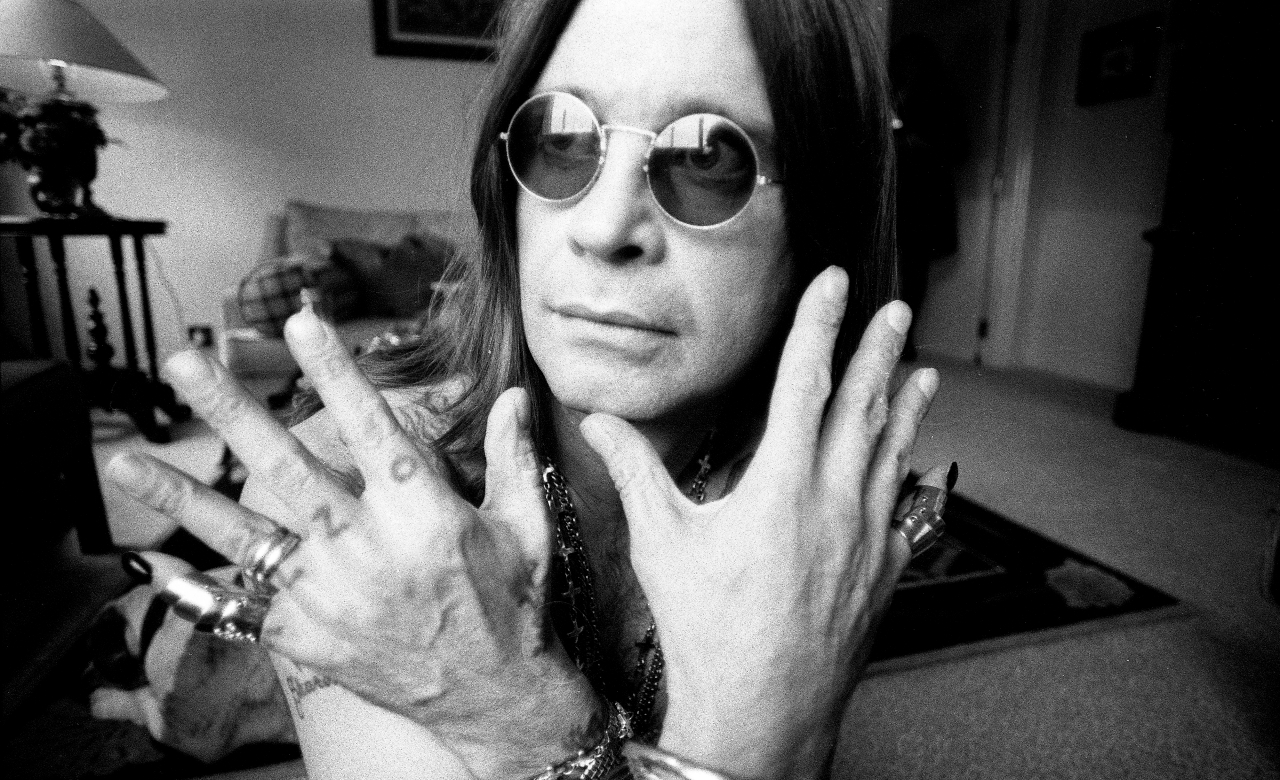
Music was the only viable path in life for Ozzy Osbourne. He’d been a squeamish slaughterhouse worker, a dissatisfied day labourer, and even a bungling burglar – the latter landing him in Birmingham’s Winson Green Prison when he was 17.
But when he stepped onstage with Black Sabbath, Ozzy truly came to life. So when he was fired from the band, on April 27, 1979, for being a “pissed, coked-up loser”, he figured his life was over.
“I was unemployed, and unemployable,” he later recounted in his autobiography, I Am Ozzy. “I remember thinking, ‘Well, I’ve still got a few dollars in my pocket, so I’ll have one last fling.’”
Ozzy embraced oblivion with the enthusiasm of someone whose only alternative was the gallows. Stocking up on booze and cocaine while holed up in a Los Angeles hotel, he spent weeks getting blitzed. By his own reckoning, when future wife Sharon Arden, daughter of then-Sabbath manager Don Arden, turned up and offered to manage him if he could get his shit together while he sat “in a puddle of [my] own piss, smoking a joint”, nobody was more shocked than him.
What happened next was one of rock’s all-time great comebacks. With help from Sharon and, initially, guitarist Randy Rhoads, Ozzy went from write-off to bona fide superstar. Within a few years, he was bigger than he’d ever been with Black Sabbath. He never looked back.
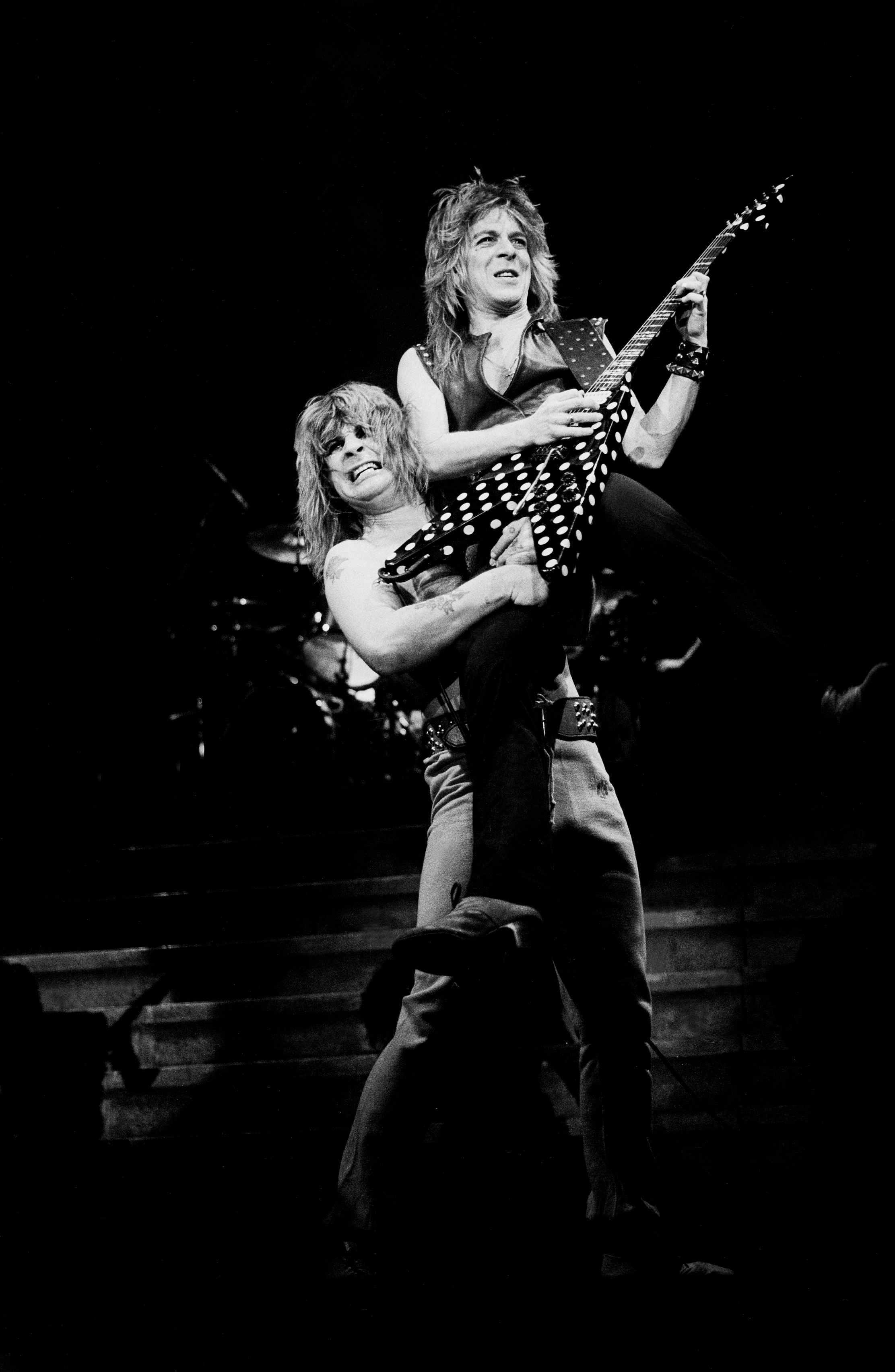
Tensions in Black Sabbath had simmered long before Ozzy’s firing. After temporarily quitting the band in 1978, he’d kicked around the idea of a band called Blizzard Of Ozz, but it came to nothing.
In late 1979, after he’d been booted out of Sabbath, Sharon Arden helped him turn the idea into reality. Recruiting bassist Bob Daisley, drummer Lee Kerslake and keyboardist Don Airey, Ozzy now had a band. But in former Quiet Riot guitarist Randy Rhoads, he also found a kindred creative spirit who encouraged his own songwriting.
Sign up below to get the latest from Metal Hammer, plus exclusive special offers, direct to your inbox!
Ozzy’s arrival as a solo artist came on August 29, 1980, with the release of his debut single, Crazy Train. With its bouncing, jubilant riff, it couldn’t be further from the doom and dread of Sabbath. It was followed a couple of weeks later by Blizzard Of Ozz, the album that would show that, far from being washed up, Ozzy was ready for the incoming decade.
Ozzy’s early tours were relatively modest, with the band playing theatres in both the UK and US. It was a calculated move on Sharon’s part, so that shows would sell out and Ozzy would be seen as a still-viable force. It paid off. By the end of 1981, they were headlining arenas.
Between tours, personnel in the band changed, with drummer Tommy Aldridge replacing Lee Kerslake and bassist Rudy Sarzo replacing Bob Daisley. Rudy had been recommended to Ozzy by Randy Rhoads, his former bandmate in Quiet Riot.
“They took him on his word, ’cos Randy had so much credibility,” Rudy recalls. “There was so much love and respect between Ozzy, Sharon and Randy.”
Rudy joined in March 1981, witnessing Ozzy’s career take a steady upwards trajectory. The bassist watched as crowds grew bigger gig by gig.
“The best way I can describe it was like being on a rollercoaster,” Rudy recalls. “During [Ozzy intro tape] Carmina Burana, I saw people’s lighters light up for the first time. Time and space had no relevance to reality at the moment. It was like stepping through the looking glass in Alice In Wonderland.”
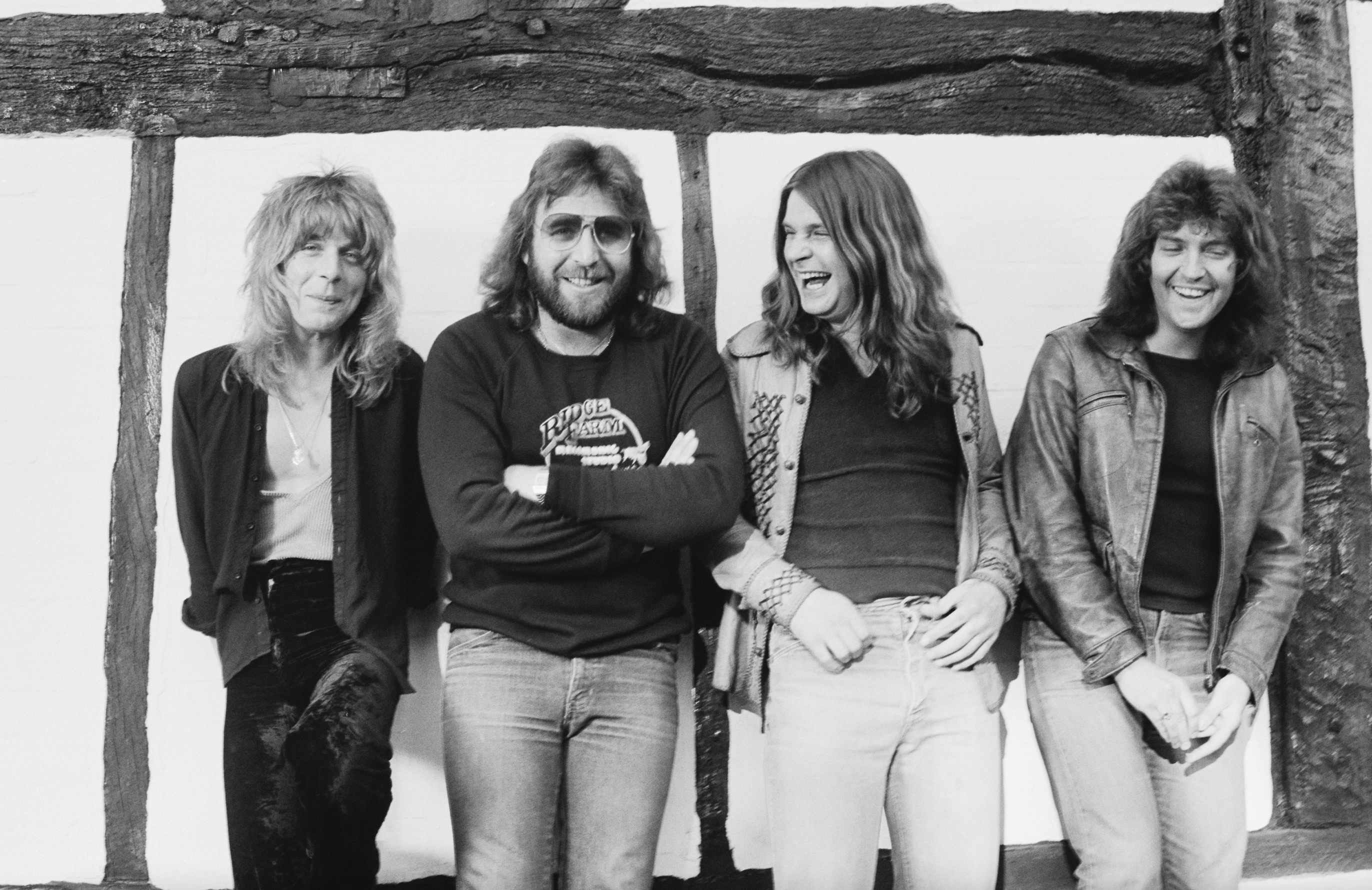
Ozzy’s second album, Diary Of A Madman, was already in the can by the time Rudy joined (although he was credited on the sleeve, his predecessor, Bob Daisley, had played on it).
Released in October 1981, it broke into the US Top 20. It also consolidated Ozzy’s ‘madman’ persona, something Rudy witnessed close up. He recalls a drunken night out in Rochester, New York, that ended in a massive food fight, with Rudy drenched in cheese dressing and forced to walk back to the band’s hotel because no taxi would pick him up.
“I looked crazy,” he says. “I shower and I’m laying in bed, still drunk, and the whole crew, Sharon and Ozzy storm my room. They throw me on the ground face down and naked, and they pour garbage cans from the lobby on me. Afterwards Ozzy goes, ‘Man, that was awesome! You’re one of us!’ That was my initiation!”
Ozzy himself was already becoming pretty infamous for his behaviour. During a meeting with record label executives in March 1981, he’d bitten the head off a dead dove in front of the shocked, speechless suits. The following January, at a gig in Des Moines, Iowa, he offered fans a live re-enaction when he bit the head off a dead bat during a gig. Rudy Sarzo saw the whole thing unfold.
“The bat actually fell in front of me,” Rudy says. “I saw this thing, and I looked at Ozzy and pointed at it with the headstock of my bass, and I just kept headbanging. After the show, there was an ambulance waiting for Ozzy. So I said to Sharon, ‘What happened?’And she says, ‘Oh yeah, Ozzy bit into a bat, and we can’t find it because he spat it out into the pit. So they had to take him to [the] emergency [room].’”
Ozzy claimed that he’d thought it was a rubber bat, but the incident meant he had to have a rabies shot every day for the rest of the tour. It didn’t curtail his wildness – a month later, he was arrested for urinating on The Alamo while wearing one of Sharon’s dresses. After some hasty negotiations with the local law enforcement, he avoided jail for desecrating a national monument, instead getting away with a misdemeanour charge of public intoxication.But the party would soon take a dark turn.
On March 19, 1982, Randy Rhoads, costume designer/make-up artist Rachel Youngblood and pilot Andrew Aycock were killed when the light aircraft they were aboard crashed after Aycock decided to ‘buzz’ the band’s tour bus and accidentally clipped a wing on it.
Ozzy, Sharon and Randy’s surviving bandmates were devastated. Despite the death of the singer’s friend and musical right-hand man, there were touring commitments to fulfil, and less than two weeks later the tour restarted, with stand-in guitarist Bernie Tormé and, later, Brad Gillis.
“I don’t know where he found the strength to get through that,” says Rudy, who would leave the band shortly after. “To stand up there and sing those songs without Randy must have taken incredible courage. It was hard for all of us.”
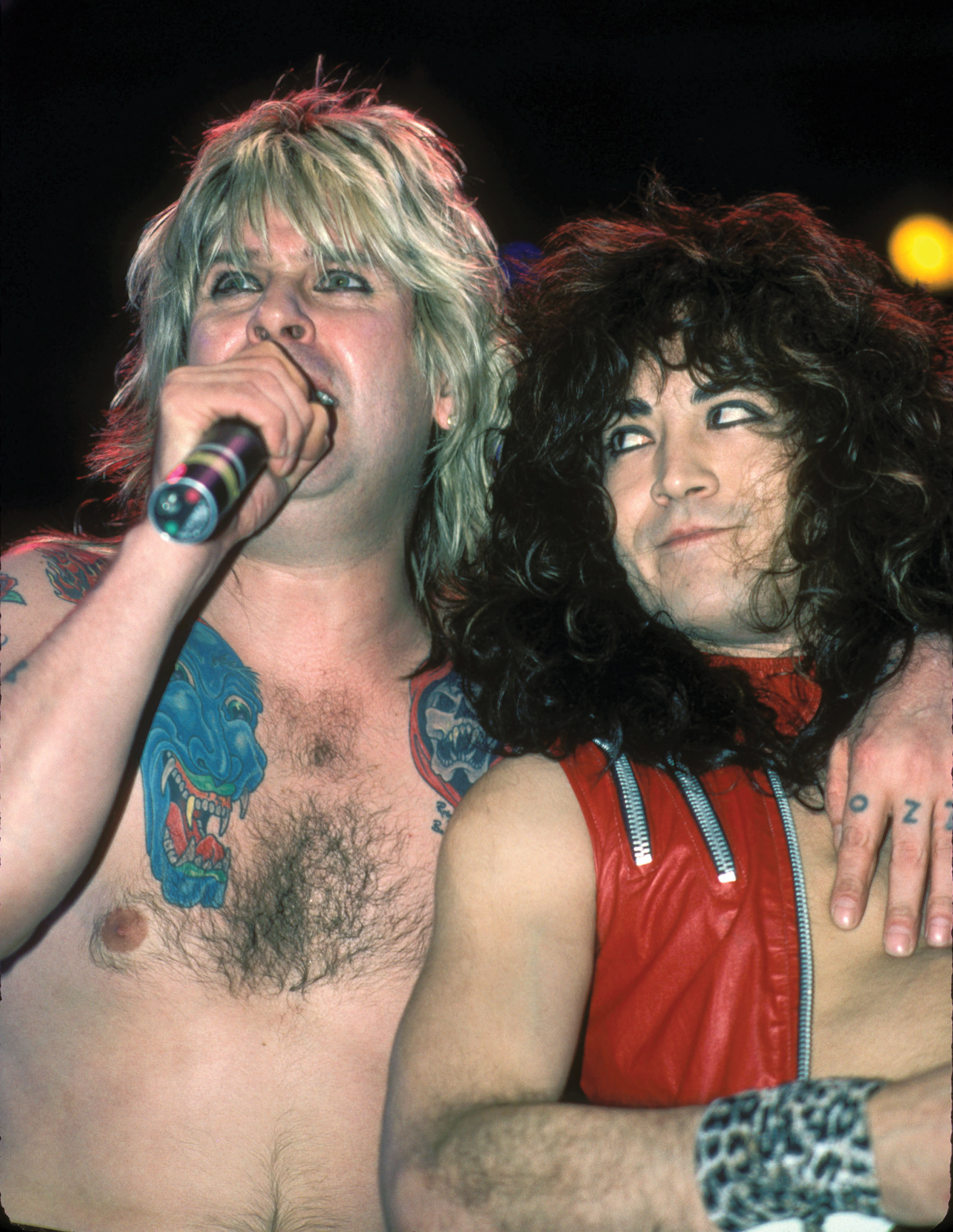
A permanent replacement for Randy was found in guitarist Jake E. Lee, who appeared on 1983’s Bark At The Moon album. The title track, with its werewolf-themed video, would get heavy rotation on MTV, raising Ozzy’s profile further.
1986’s follow-up The Ultimate Sin was even more successful, reaching No.8 in the UK and No.6 in the US, and spawning the hit single Shot In The Dark. But the trauma of losing Randy Rhoads still haunted the singer. Part of The Ultimate Sin was written while Ozzy was checked into rehab clinic the Betty Ford Center to get treatment for alcohol and substance abuse.
By 1987, there was another change of guitarist. Jake E. Lee was out, replaced by Zakk Wylde, an unknown 20-year-old from New Jersey. He’d got the gig after sending in an audition tape and a picture that reminded Ozzy of Randy Rhoads.
Zakk’s live debut with Ozzy was a baptism of fire – a gig at Wormwood Scrubs prison in London in July 1987.
“The whole thing was bizarro land,” Zakk recalls. “We performed in front of these fuckin’ lifers – all I could think about was, ‘I hope I pass this fuckin’ audition so they don’t leave me behind. I’m the closest thing to Pamela Anderson these motherfuckers are going to see for the rest of their lives!’”
Ozzy and Zakk forged an instant friendship during the making of the singer’s fifth solo album, 1988’s No Rest For The Wicked. The young guitarist quickly becoming both a valuable musical foil and a partner-in-crime when it came to drinking.
But Ozzy’s own issues with alcohol weren’t going away. In September 1989, he reached rock bottom when he was arrested for attempted murder, after attacking Sharon and trying to strangle her while in a drunken stupor (he insisted he had no memory of the incident). Sharon dropped the charges, but she gave him an ultimatum: he had to stop drinking. And so, as the 1990s began, Ozzy got sober.
At the same time, metal was changing. Alt rock trailblazers such as Jane’s Addiction and Faith No More were on the rise, while grunge was stirring in Seattle. This changing of the guard would soon render many rock and metal bands redundant, but Black Sabbath and Ozzy were exceptions.
Bands such as Soundgarden and Alice In Chains made no secret of their influence, while Faith No More turned in a faithful cover of Sabbath’s War Pigs as a bonus track on their breakout 1989 album The Real Thing.
In November 1990, the latter were invited to perform War Pigs with Ozzy himself at an industry event in Jersey. At the afterparty, the singer sat next to FNM drummer Mike ‘Puffy’ Bordin and struck up a conversation.
“He’d been through a rough time and he looked so sad,” Mike tells Metal Hammer. “He said to me, ‘Why did you guys do War Pigs on the album? Are you taking the piss?’"
It caught me off guard. I launched into this long story about how when I was young my mom killed herself, I didn’t have much of a family... Things changed for me when I heard Black Sabbath. So I told him, ‘You saved my life.’ It really fucking hit him.”
By time Ozzy’s sixth solo album, No More Tears, was released in 1991, the singer was healthier than he’d ever been. It was reflected in the album, which reinvigorated him for the 1990s. Zakk Wylde recalls Ozzy’s ability to come up with vocal melodies on the spot.
"He almost never needed time to work on them,” says the guitarist. But while Ozzy was sober, it didn’t mean shades of the old madman didn’t occasionally shine through. At one point on tour, Zakk found himself in a hotel room with the singer.
“We were talking about The Who one time and Ozzy goes, ‘I’ve done some crazy things, but I’ve never thrown a TV out the window,’” says Zakk. “We check the coast is clear and then launch this thing. When it hit the ground, the explosion that it made had us crying. Ozzy goes, ‘I’ve heard a lot of things in my life, but that might be one of the greatest.’”
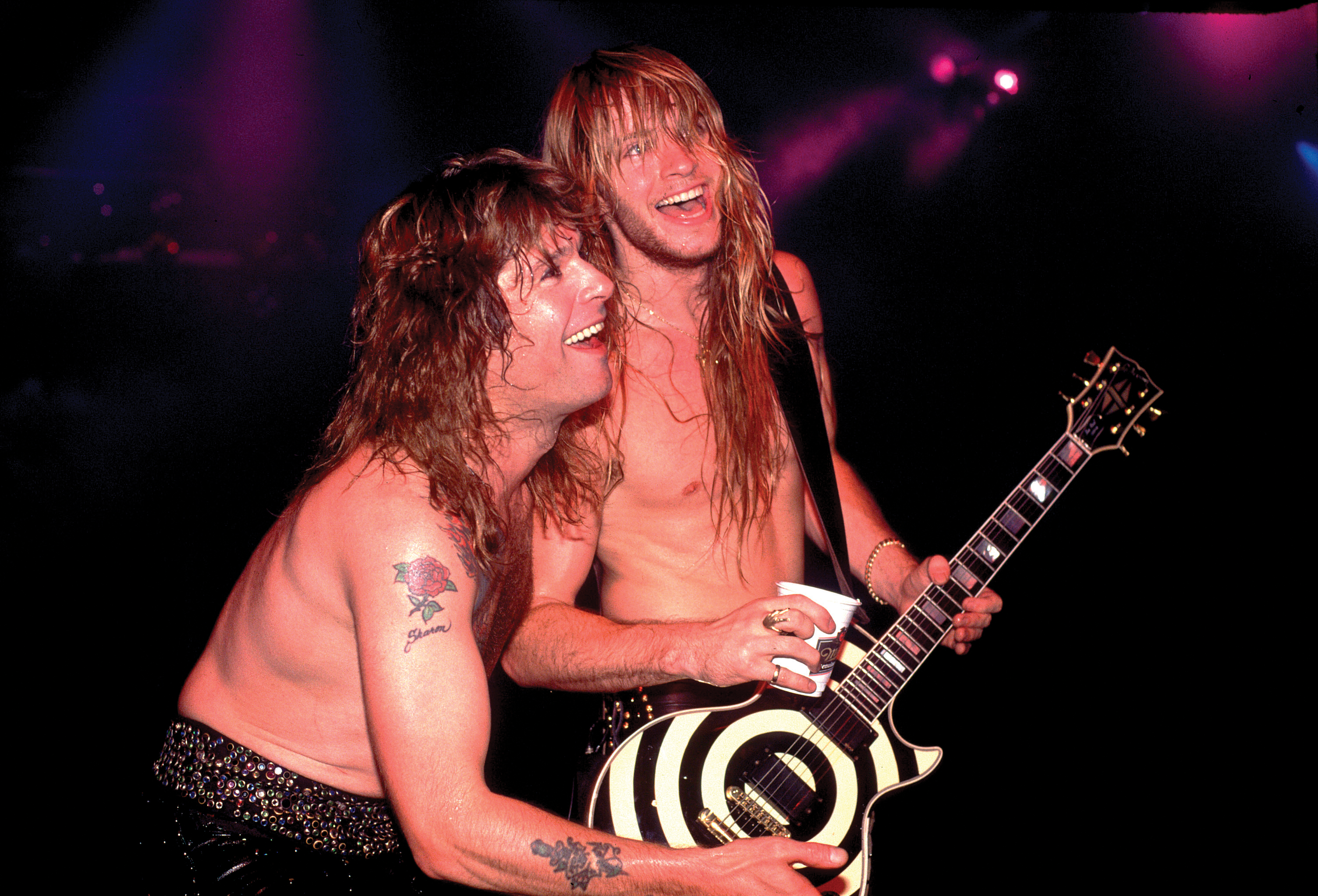
Ozzy had announced that the No More Tears tour would be his last, even dubbing it No More Tours. But that plan didn’t stick. Ozzy returned in 1995 with a new album, Ozzmosis, and the wryly named Retirement Sucks tour.
After the organisers of Lollapalooza had deemed Ozzy not “relevant” enough to play on the travelling alt rock festival, Sharon created Ozzfest in response. Initially a two-day event held in Phoenix, Arizona and Devore, California in 1996, it soon blossomed into a touring juggernaut, establishing Ozzy as the godfather of 90s metal and acting as launchpad for a new generation of bands, from System Of A Down to Slipknot.
Mike Bordin, who had met Ozzy at that LA bash at the beginning of the decade, had signed up to be the drummer in Ozzy’s solo band, alongside former Suicidal Tendencies/future Metallica bassist Robert Trujillo.
"I knew my place in that band – it’s not my face on the t-shirts!” Mike recalls. “I just gave him everything I had, we’d get through two snares a night. Faith No More was finishing around that time, so it was good to go out every night and play Goodbye To Romance and Flying High Again.”
1997 edition of Ozzfest was co-headlined by the reunited Black Sabbath, playing their first tour since 1978, albeit with Mike Bordin in place of original drummer Bill Ward (the latter would rejoin his bandmates for a pair of hometown shows at the end of the year).
The rest of the decade saw Ozzy alternating between solo and Sabbath tours, though the early 2000s would provide the biggest curveball of his career.
In 2002, he and his family appeared in reality TV show The Osbournes, pushing the singer into the celebrity world.
“All I can say to you is this: number one, if someone offers you a shitload of dough to be on television, you’d have to be a mug to turn it down,” he told Metal Hammer in 2022. “I thought it was gonna be a piece of cake, but you have a camera crew living in your house for three years and see how you feel at the end of it. You feel like a fucking laboratory rat.”
More serious was the 2003 quad-biking accident that nearly killed him. Zakk Wylde recalls visiting him in the hospital shortly afterwards.
“I go down with [my wife] Barbaranne and he’s surrounded by all these flowers,” the guitarist recalls. “He goes, ‘You see those over there Zakk? I don’t know who they’re from but they say, ‘You’re not dead yet?!’ I suppose at least they cared enough to send the flowers!’”
Ozzy recovered from the accident, but it marked the start of a series of medical issues that he dealt with for the rest of his life, including Parkinson’s disease (diagnosed in 2019), numerous spinal surgeries, and an accident at home that almost left him paralysed.
Despite all that, he continued to release music and tour through the 2000s and 2010s, releasing solo albums Down To Earth (2001), Black Rain (2007) and Scream (2010), as well as Black Sabbath’s 2013 reunion album, 13.
In 2020, he hit a late-career purple patch after teaming up with hotshot producer and guitarist Andrew Watt for 2020’s Ordinary Man and 2022’s Patient Number 9. The latter two albums featured a guest list of musicians, including Elton John, Tom Morello, Robert Trujillo, Tony Iommi and Duff McKagan. With hindsight, they feel like Ozzy Osbourne closing the circle – something confirmed by his announcement in 2023 that he was retiring from touring.
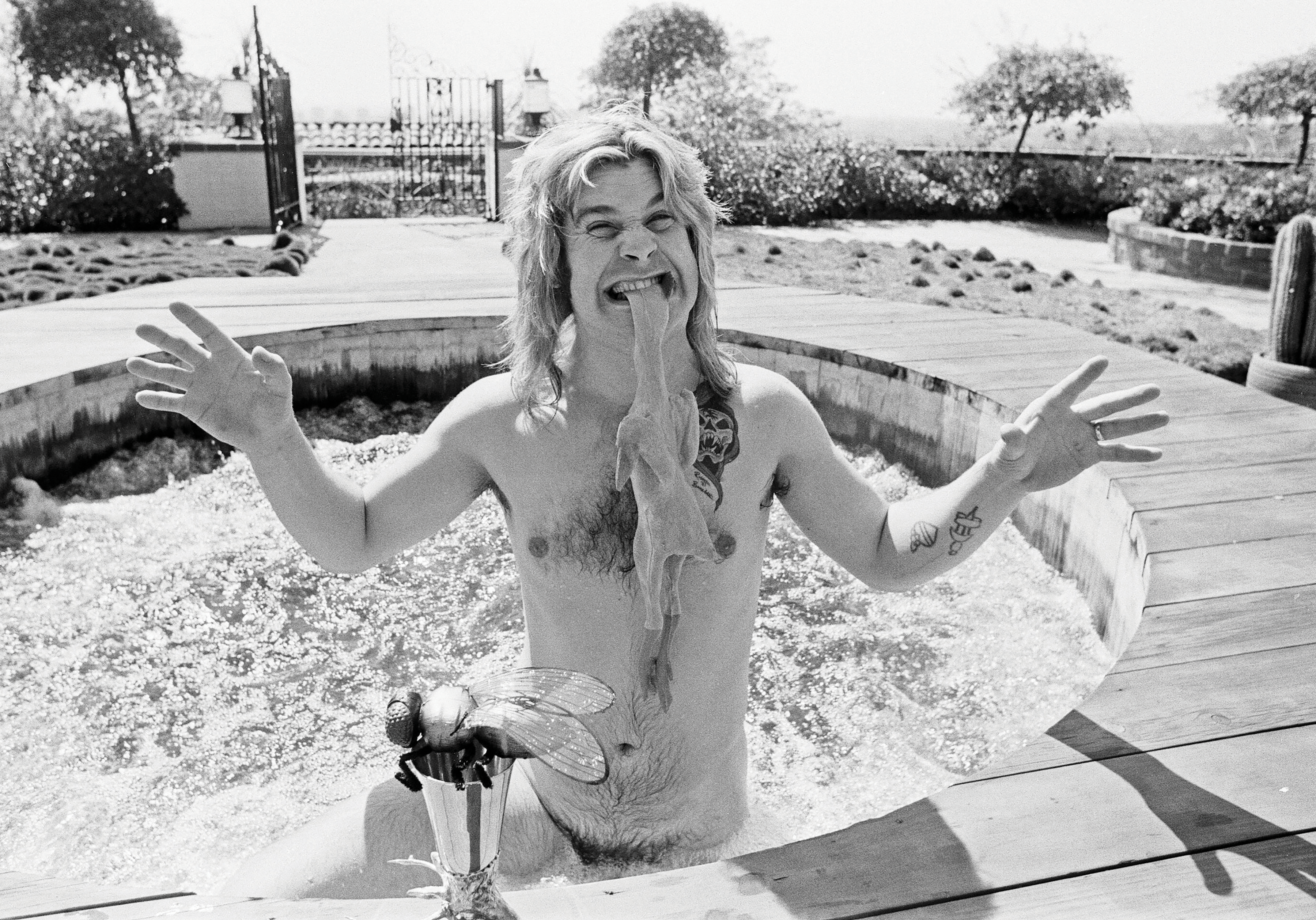
On July 5 of this year, Ozzy returned to the stage at the Back To The Beginning show - an emotional, all-guns-blazing heavy metal homecoming and send-off that will now stand as an emotional final farewell to a metal legend.
In the months leading up to the show, Ozzy had talked about recording another album with Andrew Watt. Retirement, it seems, just didn't suit him.
“Why should you ever retire?” asked Zakk Wylde when we spoke to him earlier this year. “Like Keith Richards once said in an interview, ‘Retire from what? Why would I retire from something I enjoy?’ That’s Ozzy to me too.”
Zakk's words were prescient. Just over two weeks after Back To The Beginning, the news broke that Ozzy Osbourne had passed away, surrounded by his family, aged 76. A performer until the very end.
“Ozzy has given us everything,” Mike Bordin says. “I don’t remember a world where he wasn’t Ozzy. So what should he be remembered for? Whatever the fuck he wants to be!
"I’ll always remember him as a heartfelt, genuine dude
that looks you in the eye when you talk," he continues. "There will never be anyone like him again.”
An alternate version of this feature was included in Metal Hammer #402
Staff writer for Metal Hammer, Rich has never met a feature he didn't fancy, which is just as well when it comes to covering everything rock, punk and metal for both print and online, be it legendary events like Rock In Rio or Clash Of The Titans or seeking out exciting new bands like Nine Treasures, Jinjer and Sleep Token.
You must confirm your public display name before commenting
Please logout and then login again, you will then be prompted to enter your display name.
